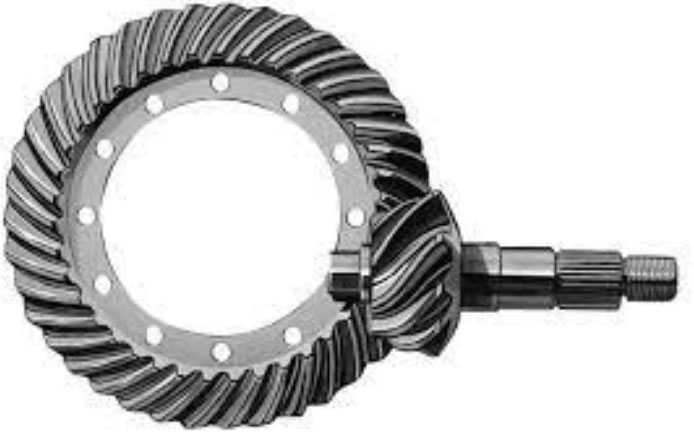
Hypoid gears play a critical role in automotive differentials, contributing to the optimization of traction and handling characteristics of vehicles. The differential is a crucial component that enables the wheels on an axle to rotate at different speeds, allowing smooth turning and preventing wheel slippage during cornering. Here’s how hypoid gears enhance traction and handling in automotive differentials:
1. Torque Distribution:
Hypoid gears efficiently transmit torque from the engine to the drive wheels. By distributing torque to both wheels, the differential ensures that power is applied to the wheel with better traction, reducing wheel slip and improving acceleration.
2. Smooth Operation:
The offset design of hypoid gears allows for smoother meshing and operation compared to standard bevel gears. This smooth operation minimizes vibrations and noise, contributing to better driving comfort and handling stability.
3. Right-Angle Drive:
Hypoid gears facilitate the right-angle transmission of power from the driveshaft to the axle, enabling the driveshaft and axle to be at different heights. This design provides more flexibility in vehicle layout, allowing for a lower center of gravity and improved handling.
4. Improved Torque Capacity:
The axial offset between the pinion and gear in hypoid gears allows for a larger pinion diameter, increasing the gear’s torque-carrying capacity. This design is advantageous in heavy-duty and high-performance vehicles where higher torque loads are common.
5. Traction Control and Stability:
The differential’s ability to distribute torque between the wheels based on traction conditions helps maintain stability during cornering and prevents wheel slip. This is especially valuable in slippery or uneven road conditions, enhancing vehicle control and safety.
6. Differential Locking:
Some advanced automotive differentials feature a limited-slip or electronically controlled differential locking system. This system optimizes traction by selectively locking the differential to distribute torque more evenly between the wheels when needed, such as when driving on low-traction surfaces.
7. All-Wheel Drive Systems:
Hypoid gears are used in all-wheel drive (AWD) and four-wheel drive (4WD) systems to distribute power between front and rear axles, providing improved traction and handling in various road conditions.
8. Off-Road Performance:
In off-road vehicles and SUVs, hypoid gear differentials provide the necessary traction to overcome challenging terrain, such as mud, sand, or rocky surfaces.
The use of hypoid gears in automotive differentials contributes to optimized traction and handling characteristics, providing drivers with better control, improved stability, and enhanced performance on various road surfaces. As vehicle manufacturers continue to advance differential technologies, the capabilities of hypoid gears in optimizing traction and handling are likely to further improve, benefiting drivers in various driving scenarios.
